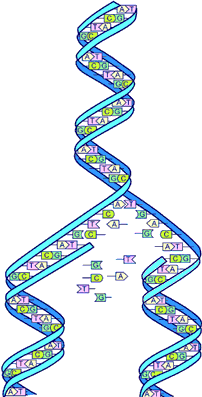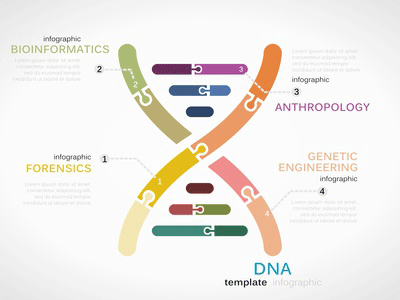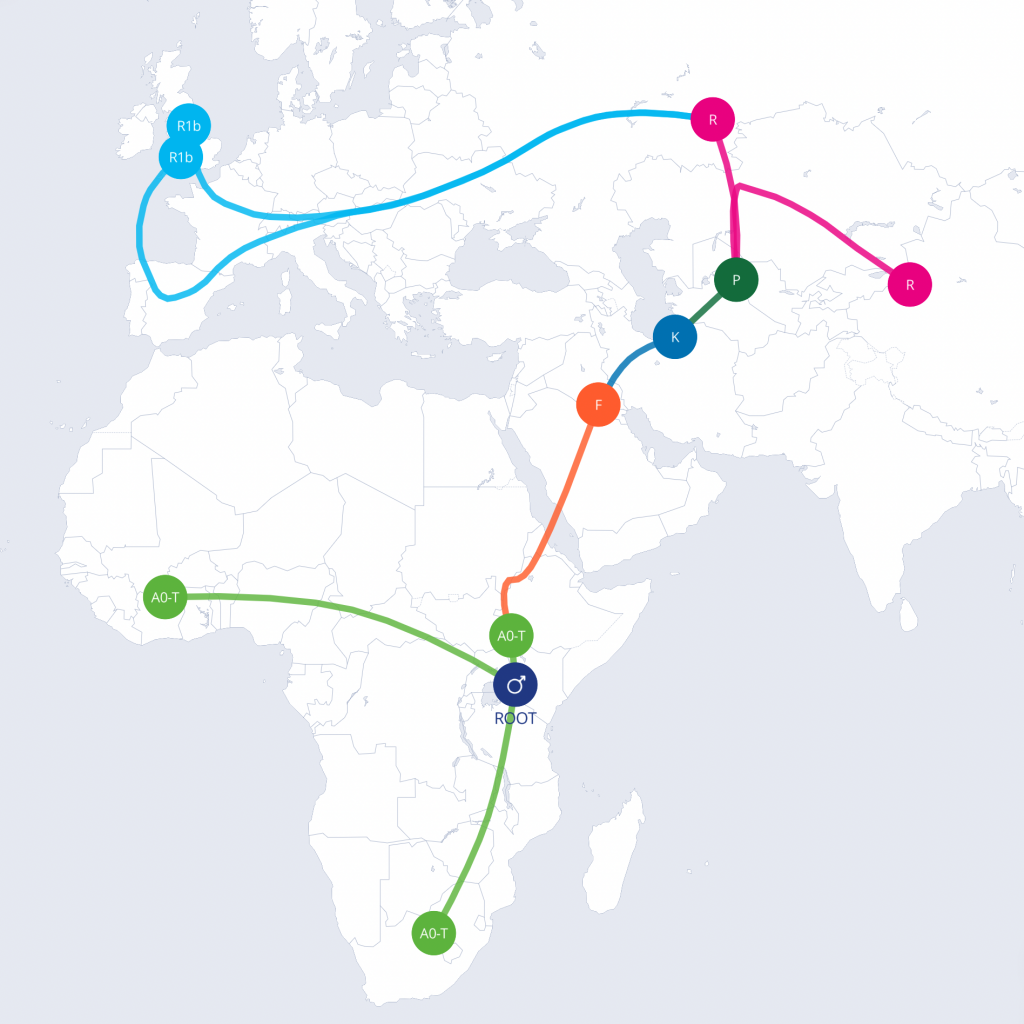In the Genes – what can your DNA reveal?

Our understanding of DNA has come an incredibly long way since The Human Genome Project first announced the complete mapping of human DNA in 2003, with about 3.1 billion pairs identified. The project took 13 years and masses of computing power with the Sanger Institute outside Cambridge playing a major role.
Today a complete sequencing of a human DNA sample takes about a day – we have come a long way! 99.9% is common to all of us, but little alterations in a few key places make all the difference between us and can reveal much. The recent power of DNA sequencing has also been brought home to us with the incredible rapid analysis of Covid-19 and its variants, and the resultant development of vaccines.
The world of genealogy and family trees has been quick to embrace this new methodology and there are now numerous companies inviting you to submit a saliva sample and learn hidden secrets about yourself and your ancestors. But not all tests are alike; some may focus on resolving specific areas, while some companies may have more detail in particular geographies. Other choice criteria could be the degree of data privacy, the cost of the tests, or integration to family tree databases.

So what might you hope to learn from a DNA test?
- Finding about my ancient ancestry. This is what most people who already know their recent ancestry really care about.
- Tracing back the genealogy, history and prehistory of my paternal lineage through my Y chromosome. If you are just interested in the ancient roots of your fatherline, then Y-DNA results reveal their journey out of Africa
- Similarly tracing back my maternal lineage through my Mitochondrial DNA. mtDNA reveal the ancient roots of your motherline
- Learning about my health (disease risks, carrier status for rare diseases, drug responses based on my genetic profile). You could then get personalised recommendations on diet, lifestyle etc.
- Finding about my recent ancestry. This may be of interest for people who were adopted or don’t know the ethnic origins of their parents or grandparents.
- Finding lost relatives. Anyone who was adopted or may have unknown siblings.
There are several good websites explaining the uses and options for DNA tests should you want to explore further:
- Your DNA Guide gives very clear descriptions on how to “Discover, Find, Begin or Explore” your DNA
- Eupedia has in in-depth guide on which DNA test to choose and goes into immense depth on Y-DNA and MtDNA Haplogroups
- TNG (who I use for our family tree) give a lot of details and links for further reading
From the numerous TV detective series we know that there are also more sinister and forensic applications for DNA analysis, and just as the tests may be used to find relatives, they may also be used to disprove relationships, as in a recent Gibbs family example.
Tyntesfield inheritance claim resolved by DNA During the course of the National Trust’s negotiations to buy Tyntesfield in 2002, a Mr Halsey spoke to newspapers of his belief that he was related to the recently deceased Lord Wraxall (George Richard Lawley Gibbs), owner of the house, and therefore perhaps the heir to the property. He believed that his father was an illegitimate son of Lord Wraxall. A BBC programme recounted the NT attempts to buy Tyntesfield and to open it to the public and during the filming both Mr Halsey and a male member of the Gibbs family descended from the 1st Lord Wraxall underwent DNA testing. The results showed that the claimed relationship was impossible, to which he remarked "it's gone forever ...". There were only two possible explanations of the DNA test results. Either Mr Halsey was not a direct male descendant of the first Lord Wraxall or a female forbear of the individual concerned bore an illegitimate son. The Gibbs’ family assured that there were no illegitimate sons in the family.
A couple of Christmases ago my daughter wanted to give me a DNA test (nothing suspicious in that…), which lead me on a journey of exploration and interpretation, first to choose the company I wanted to use for my genealogy test and then to understand the results. After considerable research I chose LivingDNA, because they are a British company, highly aware of data privacy, don’t share data, and they provide the three main DNA ancestry tests:
1. Autosomal DNA – Family Ancestry – is a mix from both parents looking at ancestors in recent generations, sometimes used to trace or discover forgotten relatives.
2. Mitochondrial DNA – Motherline Ancestry – explores the direct maternal ancestry all the way back to Africa.
3. Y-chromosome DNA – Fatherline Ancestry – explores the direct paternal ancestry back to Africa (test only available for males, women do not carry Y-chromosome).
So what did I find?
My recent ancestry, reflecting both my parents, came back as 96.9% Great Britain and Ireland, strongest in Ireland, South East England, Northern Ireland and South West Scotland, East Anglia, Cornwall and South England by order. As for my South African, American and Australian relatives; they all came from Europe. The remaining 3.1% was from the Northeast Caucuses.
My fatherline ancient ancestry is more relevant to the Gibbs Family Tree. My paternal haplogroup is found most predominately in Ireland, Scotland Brittany and Wales associated with the Atlantic shores of Northern Europe. For those curious of the details, my results came back as Haplogroup R-L21, Subclade R-L1066. A comprehensive description can be found here on Eupedia.
The paternal migration map shows them leaving Africa around 70,000 years ago, reaching Western Europe in the early Bronze Age around 2000 BC.
By contract my maternal ancient ancestry was completely different, originating in the eastern mediterranean, with no measurable British occurrence!
Did I find any long lost ancestors or cousins? My immediate ancestry is very well defined for at least 7 generations back as illustrated by my complete relatives fan chart. However LivingDNA have identified 391 “matches” of 4th cousin or greater who have also done their test, none of whom I know!


Comments
In the Genes – what can your DNA reveal? — No Comments
HTML tags allowed in your comment: <a href="" title=""> <abbr title=""> <acronym title=""> <b> <blockquote cite=""> <cite> <code> <del datetime=""> <em> <i> <q cite=""> <s> <strike> <strong>